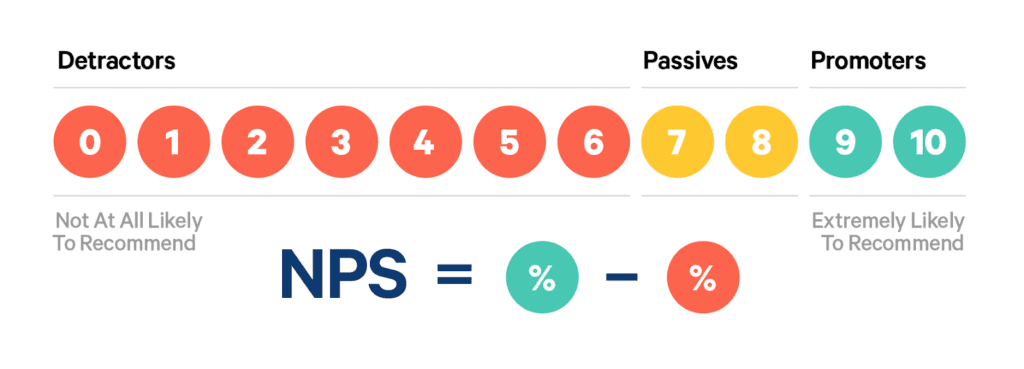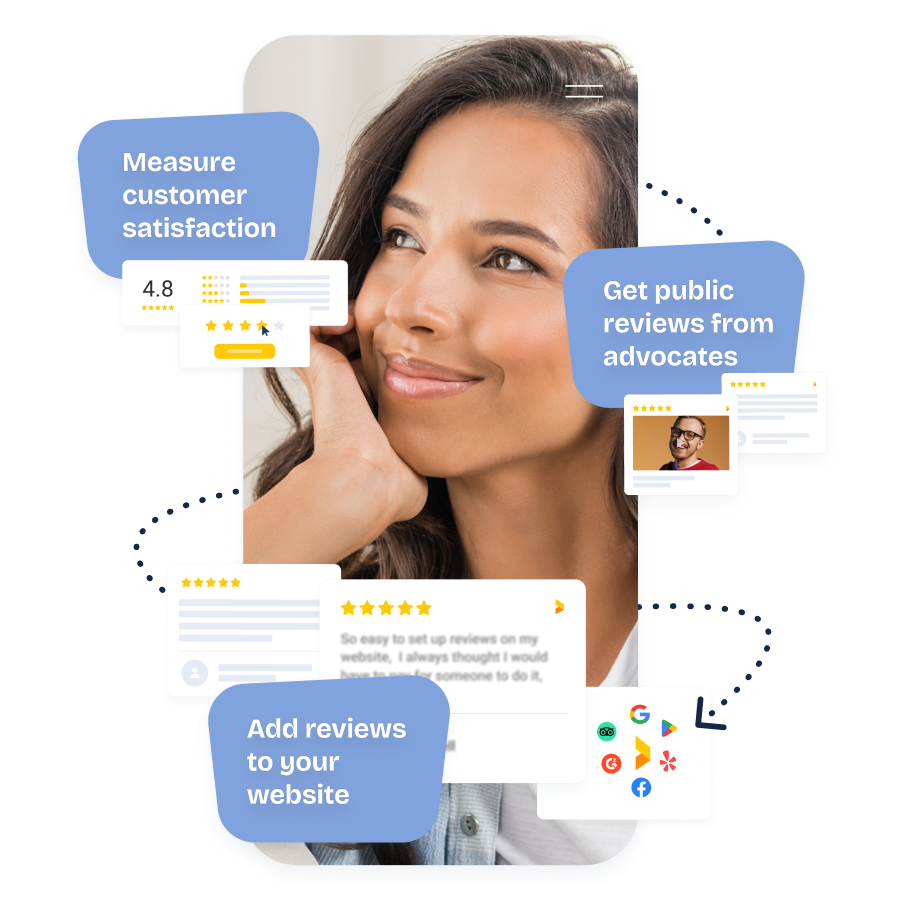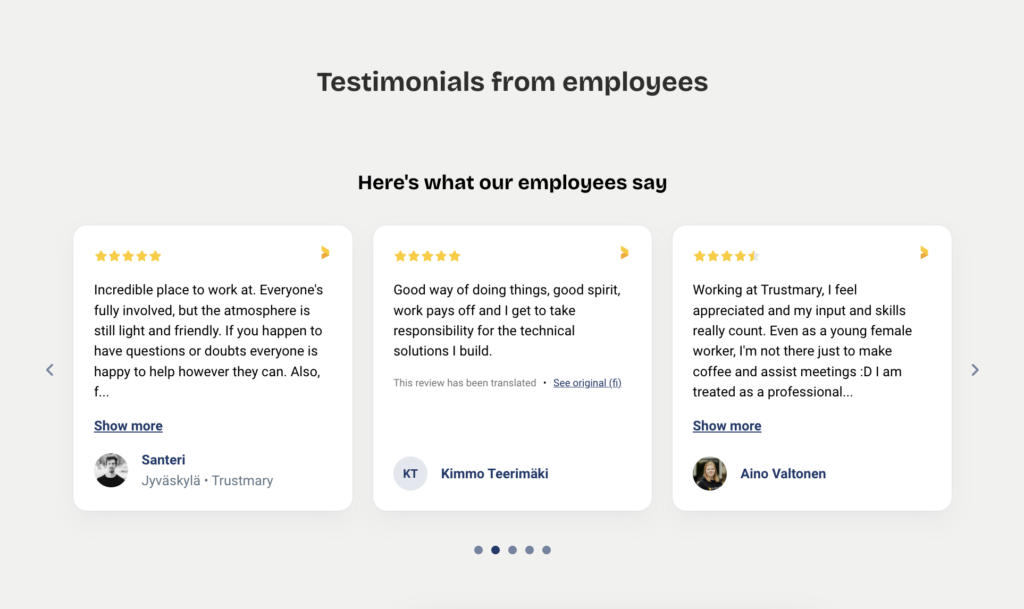10 Best Employee Pulse Survey Questions

Employee pulse surveys are a fantastic way to gauge your team’s satisfaction, engagement, and overall well-being.
They are essential for understanding your company culture and company values, which play a crucial role in shaping employee engagement and workplace satisfaction.
Here are the best practices and top employee satisfaction questions to include in your next survey to get the most insightful feedback.
What Is an Employee Pulse Survey?
An employee pulse survey is a quick, frequent survey designed to measure employee engagement and satisfaction.
This type of survey usually only includes one important question, making it as effortless as possible to respond.
These surveys help identify issues, track trends, and improve workplace culture.
Unlike traditional employee surveys, which are conducted less frequently, employee pulse surveys provide timely insights and higher response rates, making them more effective in fostering a more engaging workplace environment.
Pulse Surveys and Traditional Employee Surveys Compared
| Pulse survey | Traditional employee survey | |
| Frequency | Monthly or quarterly | Annually or bi-annually |
| Length | Very brief (1 to 2 questions is the best) | Often long with dozens of questions |
| Purpose | Quickly gauge employee engagement, satisfaction, and immediate concerns. | Comprehensive analysis of various aspects of employee experience. |
| Focus | Short-term insights and trends, identifying immediate issues that can be addressed promptly. | Long-term trends, deeper analysis, and strategic planning. |
| Example questions | How satisfied are you with your job this month? Do you feel valued at work? How would you rate your work-life balance this quarter? | How satisfied are you with your overall career progression at the company? Do you feel the company’s mission and values are clear and aligned with your own? How effective do you find the company’s training and development programs? |
| Participation | Higher participation due to shorter, more frequent surveys | Employees may experience survey fatigue, leading to lower response rates. |
| Response time and analysis | Quick to complete and analyze, allowing for faster action. | Takes longer to complete and analyze, delaying actionable insights. |
| Actionability | Immediate feedback can lead to rapid adjustments and improvements. | Broader insights are used for long-term planning and major initiatives. |
Why Use a Pulse Survey?
Pulse surveys are an invaluable tool for organizations looking to maintain a healthy and engaged workforce. Here are the key reasons why you should consider implementing pulse surveys in your organization.
1. Frequent Feedback
Pulse surveys are conducted frequently, often monthly or quarterly, allowing you to gather regular feedback from employees.
This helps identify and address issues promptly before they escalate.
2. Short and Focused
They are designed to be short and to the point, typically with just one or two questions.
This makes them less time-consuming for employees to complete, ensuring higher response rates and more accurate data.
3. Real-Time Insights
They provide real-time insights into employee satisfaction and engagement levels.
This immediacy enables managers to take quick actions to improve the work environment and address any concerns.

4. Improved Engagement
Regular feedback opportunities make employees feel heard and valued, boosting their engagement and commitment to the company.
It shows that the organization cares about their well-being and is proactive in making improvements.
5. Track Progress Over Time
Pulse surveys allow you to track changes in employee sentiment over time.
By comparing results from different periods, you can assess the impact of any changes or initiatives you have implemented.
6. Encourage Open Communication
They create a culture of open communication within the organization.
Employees are more likely to share their honest opinions when they know they have regular opportunities to provide feedback.
7. Identify Trends and Patterns
Pulse surveys help in identifying trends and patterns in employee feedback.
This can be invaluable in pinpointing recurring issues or areas that consistently need improvement.
8. Data-Driven Decisions
Pulse surveys provide concrete data that can be used to make informed decisions.
Rather than relying on assumptions, you can base your strategies on actual feedback from your employees.
Frequently Use Employee Pulse Survey Questions
Below are some examples of pulse survey questions.
Remember that effective pulse surveys include one question only and measure the same thing over time for comparative results.
Choose one question that you will be using for a longer time (such as one to two years) before switching it up.
Alternatively, if comparing results is not important for you, you can change the question for each pulse survey to gather insights on various topics.
Most employee pulse survey questions can be answered on a scale, as choosing a rating is fast and effortless compared to e.g. open questions. Additionally, they are easy to measure and track over time.
1. How likely are you to recommend our company as a great place to work?
Our go-to recommendation is the Employee Net Promoter Score question. It is a spin-off from the Net Promoter Score, which is the most used customer feedback question.
This question can be a strong indicator of overall employee satisfaction and loyalty. It also tells you who might be willing to recommend you, and allows for a smooth transition to asking for an employee testimonial.

The eNPS question is answered on a scale from 0 to 10. Responses are divided into three groups:
- 0 to 6 = Detractors (people who are dissatisfied and likely to leave and even spread bad word-of-mouth)
- 7 and 8 = Passives (people who are reasonably satisfied but not excited about the workplace)
- 9 and 10 = Promoters (the most satisfied employees and your biggest advocates who are likely to talk positively and recommend the workplace to others)
Your eNPS score is calculated by subtracting the percentage of Detractors from the percentage of Promoters, leaving you somewhere between -100 and 100. Anything over 0 is a sign that you have more happy than unhappy employees.
A score over 30 is already a big win and means you are doing something right!
2. How satisfied are you with your job?
This question helps gauge overall job satisfaction, offering insights into potential retention issues.
3. Do you feel valued at work? / How valued do you feel at work?
Understanding if employees feel appreciated can highlight areas needing improvement in recognition and rewards.
This can be used as a yes/no question or as a scale question.
4. How would you rate your work-life balance?
This question reveals if employees are feeling overwhelmed or if they need better support for balancing work and personal life.

5. Do you have the resources you need to do your job effectively?
Assessing resource availability can pinpoint specific areas where additional support or tools are required.
6. How clear are you about your role and responsibilities?
Role clarity is essential for productivity and job satisfaction. This question ensures employees understand their job expectations.
7. How comfortable are you with giving feedback to your manager?
This question highlights the openness of communication channels and the trust employees have in their management.
8. Do you feel that your professional growth is encouraged here?
This helps in understanding if employees see a future with the company and feel supported in their professional development and professional development opportunities.
9. How do you feel about the communication within the company?
Good communication is crucial for a healthy work environment. This question can identify any gaps or areas needing improvement in internal communications.
10. Name one thing we could do to improve your experience at work.
An open-ended question like this allows employees to share specific feedback that might not be covered by other questions.
By interpreting these responses, organizations can gain valuable insights into employee satisfaction and engagement, leading to actionable survey responses that drive meaningful improvements.
However, keep in mind that people are less likely to respond to open-ended questions compared to scale or yes/no questions. Expect lower response rates if you use this question.
The Easiest Employee Pulse Survey with Trustmary
Want to get started with employee pulse surveys quickly?
Trustmary has a solution for you that will only take a few minutes of your time to implement.
Additionally, Trustmary lets you use the pulse surveys as an opportunity to collect testimonials at the same time – and upload these testimonials on your website automatically!

Here's how it works:
- Register to Trustmary.
- Go to the Surveys tab.
- Create new survey and choose the template "Measure NPS".
- Change the NPS question into "How likely would you recommend [organization] as a workplace?"
- Upload employee list for direct email sending.
- Send the survey!
- Analyze results easily from the reporting dashboard that gives you visual survey reports of the responses.
- Optional: You can create an automation to repeat the same survey every month if you plan to use the same question every time.
(We recommend using the NPS survey template, described in this step-by-step guide, but you can create a new survey from scratch if you wish.)
Using the testimonials you get along with the employee survey responses:
- Create a review widget with just a few clicks.
- Copy the widget code.
- Paste the widget code to your website.
- Manage testimonials in Trustmary App and choose which ones you will publish (or let them all go live automatically).
In the end, you will have something like this:

Conclusion
Employee pulse survey questions should be brief and fast to respond to.
Ask them on a regular basis to keep track of employee satisfaction and loyalty – to keep up with the "pulse" of your employees.
The easiest and most effective way to conduct employee pulse surveys is Trustmary, as you can not only automate the surveys and easily access the results and a trend report, but also collect testimonials from happy employees and use them on your website.
Start for free today or book a meeting with us to learn more.
FAQ
What is the purpose of an employee pulse survey?
Employee pulse surveys aim to quickly measure employee engagement, satisfaction, and overall well-being, providing insights for workplace improvement.
How often should we conduct employee pulse surveys?
It’s recommended to conduct these surveys monthly or quarterly to regularly track trends and address issues promptly.
How can we ensure high participation in our employee pulse surveys?
Ensure anonymity, keep surveys short, communicate their importance, and share the results and actions taken based on feedback.
What should we do with the feedback from employee pulse surveys?
Analyze the feedback, identify trends, communicate findings with the team, and implement changes to address any issues or improve the work environment.
What makes a good employee pulse survey and how does it contribute to a positive company culture?
A good employee pulse survey consists of specific questions that provide measurable insights into workplace strengths and weaknesses. By collecting actionable feedback, these surveys help track engagement trends over time. This ongoing evaluation allows leaders to foster a more responsive workplace culture, which is essential for cultivating a positive company culture.
